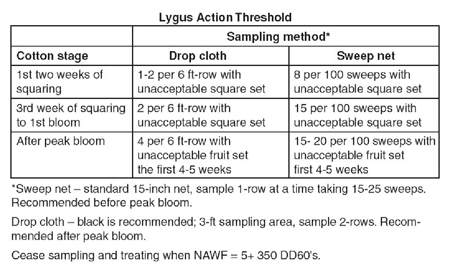Howdy yall,
We had some scattered rain and coastal showers the last few days, but I know a lot places are still pretty dry. This week I was able to spend a little more time in soybeans as well as the usual cotton scouting. I found red banded stink bugs pretty easily in the couple spots when using a sweep net to check, so we do need to be looking closely for those. The economic threshold for redbanded stink bugs in soybeans is 16 stink bugs per 100 sweeps, which is lower than the 36 per 100 sweeps for other stink bug species. Acephate tends to work better on redbanded and brown stink bugs than pyrethroids do. For more information on stink bugs in soybeans check out the Soybean Insect Guide.
 |
| Redbanded Stink Bug in Soybeans Kate Crumley |
Grain harvest is still rolling right now, and the cotton is rapidly wrapping up. Potassium deficiency and foliar disease symptoms are very obvious in most of our fields. At this point we are past the need to treat for any of these symptoms. Nearly all of our cotton fields have some open cotton now and we are nearly all way past cutout. Cutout occurs when carbohydrate supply equals demand, and vegetative growth ceases. When the plant reaches cutout, no more harvestable fruit is set. This is normally at 4 to 5 NAWF. I've included heat unit charts below to help with spray decisions for our insect pests. Temperature data for each county location is based on a field close to the center of each county. Cotton is no longer susceptible to economic damage by plant bugs and bollworms at 350 degree days (DD60), or heat units, past cutout, and is no longer susceptible to economic damage from stink bugs at 450 DD60 past cutout.

Cotton in Wharton County
Kate Crumley
I've included two bolded lines at the cutoff for bollworms and plant bugs, and for stink bugs. Bolls that will reach maturity by harvest will be too hard for the respective pests to feed on at this stage. A good bit of our cotton is no longer susceptible to insect damage now. None of the fields I scout are susceptible to insect damage anymore, so I am not including scouting information for insects.
 |
| Cotton Aphid Kate Crumley |
The threshold for cotton aphids is 50 aphids per leaf, unless you have cracked bolls. Once we have cracked bolls the threshold for cotton aphids is 10 aphids per leaf. If you see aphid mummies in the field (tan or black dry and unmoving aphids), that's a good thing. Parasitoid wasps lay eggs in the aphids, and the aphid forms a mummy while the wasp larvae is pupating inside. These wasps, lady beetles, and lacewings can knock back aphid populations. Treatment for aphids is rarely justified, but I have seen some cotton at threshold this year. If you do decide to treat for aphids, do not use a pyrethroid. Pyrethroids and organophosphates are broad spectrum, and kill beneficial insects as well as your target insect, but pests like aphids bounce back much quicker than their predators do. Their high reproductive rate will allow their numbers to soar after a broad spectrum insecticide application kills all their predators.
 | ||
Aphid Mummies on Cotton
|
 |
| H. zea Larvae Kate Crumley |
Our Bt traits overlap across corn and cotton. If the caterpillars survive the traits on corn then as adults fly to cotton to lay eggs, it's likely their offspring will survive the same traits on cotton. Below is a chart showing the overlap of Bt traits between crops and technologies.
 |
| H. zea Eggs on Cotton Kate Crumley |
 |
| Evidence of Sucking Insect Damage on Cotton Boll Kate Crumley |


Please check out our weekly IPM Audio Updates, the website to sign up to receive those is listed below. If you have any questions feel free to contact me either by email or calling the office. Have a good weekend everyone, and try to stay cool!
Sincerely,
Kate Crumley
Check out our weekly IPM Audio Updates
Cotton Insect Management Guide
Development and Growth Monitoring of the Cotton Plant













No comments:
Post a Comment